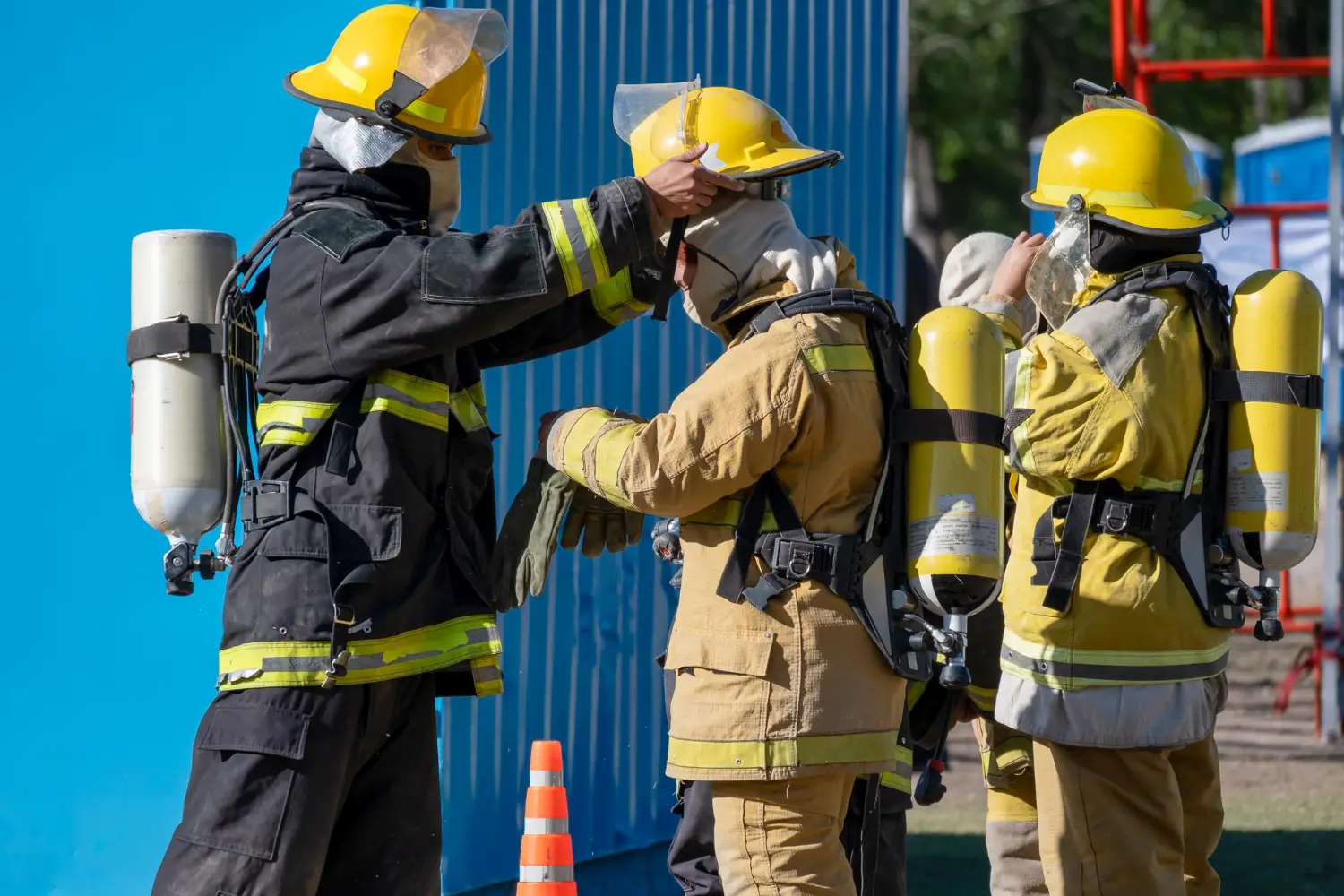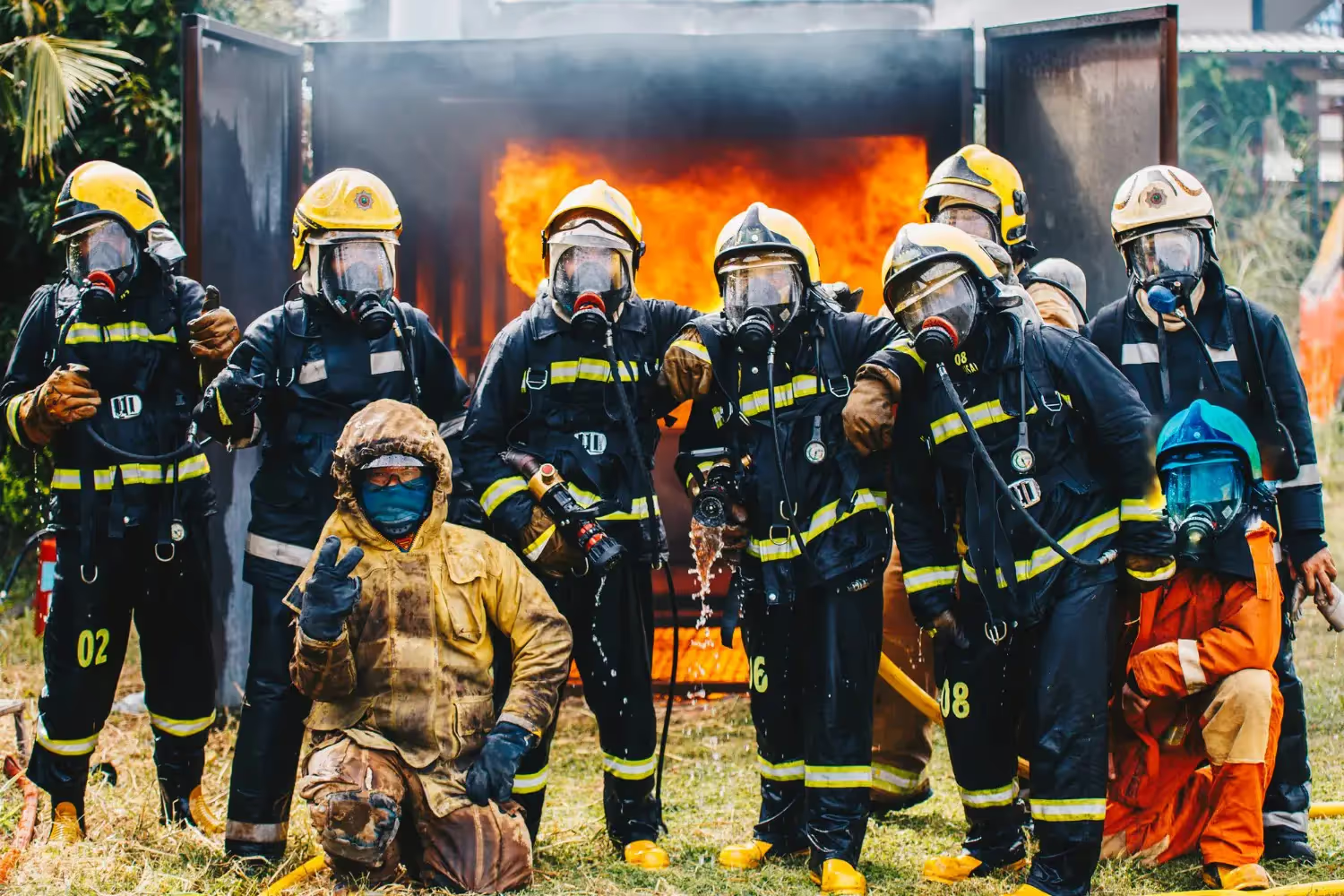Fire Investigation Forensic Science: A Comprehensive Guide


Think about a moment when a fire starts burning intensely. The flames rise, insatiably engulfed, and in the blink of an eye, it's uncontrollable, leaving behind a total path of destruction.
In the trenches of this devastation, fire investigators are working tirelessly to investigate the reality behind the fire and get to the bottom of this.
To truly decipher the flames in fire investigations, forensic science is an incredible asset (and a force to be reckoned with). This is the point where an accurate investigation will provide a beacon of truth while pursuing justice for victims and their next of kin.
Welcome to BlazeStack’s ultimate guide on fire investigation forensic science. With this guide, we aim to help you grasp the basics of the most complex topics surrounding forensic science fire investigation in as simple of terminology as possible. Along the way, we’ll take a look at everything from how fires behave to understanding the investigative techniques and pathways to a career within the field. Whether you’re new or a seasoned professional, this guide has something for you.
Table of Contents
- Understanding the fundamentals of fire and combustion is crucial.
- A systematic approach to fire scene investigation is essential for determining the origin and cause.
- Legal and ethical considerations are paramount in fire investigations.
- Advanced techniques and technologies are enhancing the field of fire investigation.
- Continuous professional development is vital for staying current in the evolving field of fire investigation.
Fire investigation forensic science is a multidisciplinary field. It draws on the principles of chemistry, physics, engineering, and biology in order to uncover the science behind fire-related incidents. With an arsenal of analytical tools and methodologies, investigators aim to decode what’s concealed beneath the ashes and shed light on the circumstances among the flames.
Forensic experts play a vital role in detecting arson cases, so perpetrators can be held accountable for their actions.
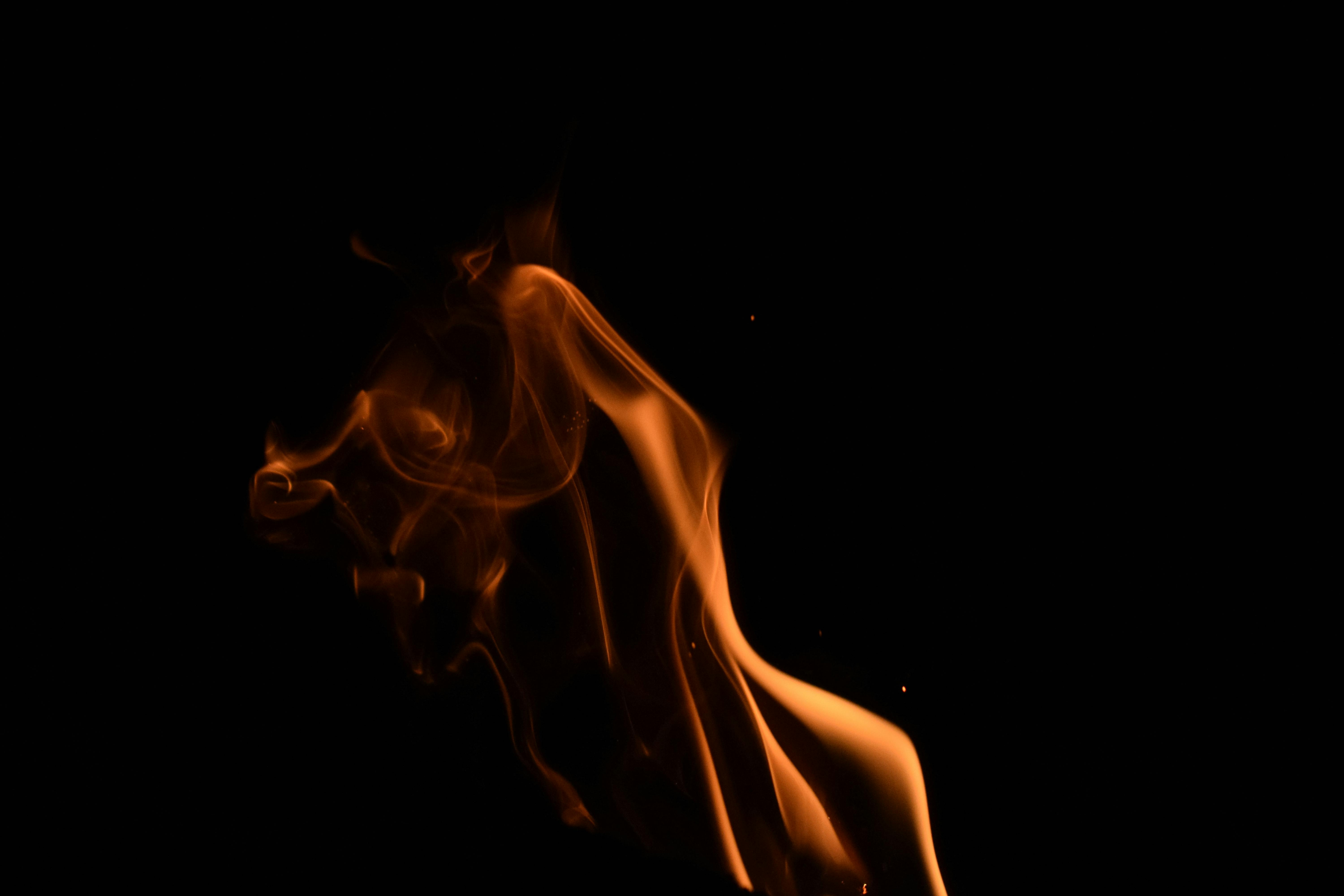
Exploring Dynamics Behind Combustion in Science
Fire dynamics can be defined as the mechanisms that govern the behavior of flames. They offer valuable insights into the nature of combustion. Those in the field study the many different factors that influence fire development. These include fuel type, oxygen availability, and environmental conditions. When investigators understand fire dynamics, they can properly decipher the progression of a fire and clues to its origin and cause.
Ignition Sources: Tracing the Path of Destruction
Central to fire investigation forensic science is the tracing of ignition sources as well as the propagation of flames. Investigators employ a keen eye for detail. They scrutinize the scene for any catalysts that sparked the inferno. Forensic experts are guided by the analysis of how the fire spread. Examples can include electrical malfunctions and human negligence. This is because each ignition source leaves a distinct imprint behind.
Thermal Effects: The Impact of Heat
The thermal effects of fire exert an influence on the surrounding environment. This is because it leaves behind a trail of indicators. These signatures speak of the fire’s intensity and duration. Investigators reconstruct the timeline of events by:
- Analysis of heat patterns.
- Structural deformations.
- Material transformations.
By decoding thermal effects, forensic scientists gain insights into the fire dynamics.
It’s important to understand combustion in fire investigation forensic science. Combustion is the chemical reaction that drives the progression of flames.
Combustion consists of fuel, oxygen, and heat culminating in the release of energy. This energy takes the form of heat and light.
Chemical Reaction of Fire
The fire tetrahedron model below is a model that encompasses fuel, heat, oxygen, and a chemical reaction. Take a look at how this chart can aid in analyzing the four essential components of fire:
Heat Transfer Mechanisms
Heat transfer mechanism is defined as the intricate processes through which thermal energy transitions from one object to another. This shapes the dynamics of temperature distribution.
Here are the 3 primary heat transfer mechanisms and examples of each:
Conduction:
Conduction represents one of the fundamental mechanisms of heat transfer. This is characterized by the direct exchange of thermal energy between adjacent particles within an object. This process occurs through molecular collisions. This is where kinetic energy is transferred from higher energy particles to lower energy particles. Through conduction, heat diffuses gradually through materials.
Example:
Let’s think about being in a kitchen when a fire erupts from a malfunctioning toaster. Heat produced by the electrical malfunction starts to seep through the metal casing of the toaster.
As the heat moves through the metal, it makes its way to the nearby wooden cabinets and curtains. The heat continues to travel through the metal reaching out and touching the flammable materials nearby. Slowly but surely, the wooden cabinets and curtains start to warm up, until they ignite. The fire finds new life fueled by the energy transferred through conduction.
Convection:
Convection is a form of heat transfer via moving fluids. These include liquids and gasses. The difference in temperature induces buoyancy forces. Thus begins the ascent of warmer fluid and descent of cooler counterparts. This circulation generates convection currents. Convection can occur from natural phenomena like ocean currents or engineered systems like HVAC units.
Example:
As the fire burns, hot air rises upwards. This draws cooler air from the surroundings towards the flames. It intensities the heat and fuels the fire’s growth.
Radiation:
Radiation is characterized by the emission and propagation of electromagnetic waves carrying thermal energy. Radiation is different from conduction and convection because it doesn’t need a material medium for heat propagation. This thermal energy can transverse environments with ease. Charge particles undergo oscillatory motion. This emits photons in the form of electromagnetic radiation. These energy waves propagate through space, encountering and transferring heat upon absorption by adjacent surfaces.
Example:
The radiant heat emitted by the fire's glowing embers warms objects nearby. This causes them to ignite and propagate the spread of the flames. No direct contact is necessary.
Fire is categorized based on the materials that fuel them. In our chart below, we analyze the 5 classes along with the most suitable extinguishing agents for each class:
Knowing the class of fire enables investigators to anticipate the fire's behavior and identify the most suitable extinguishing methods to suppress the fire effectively.
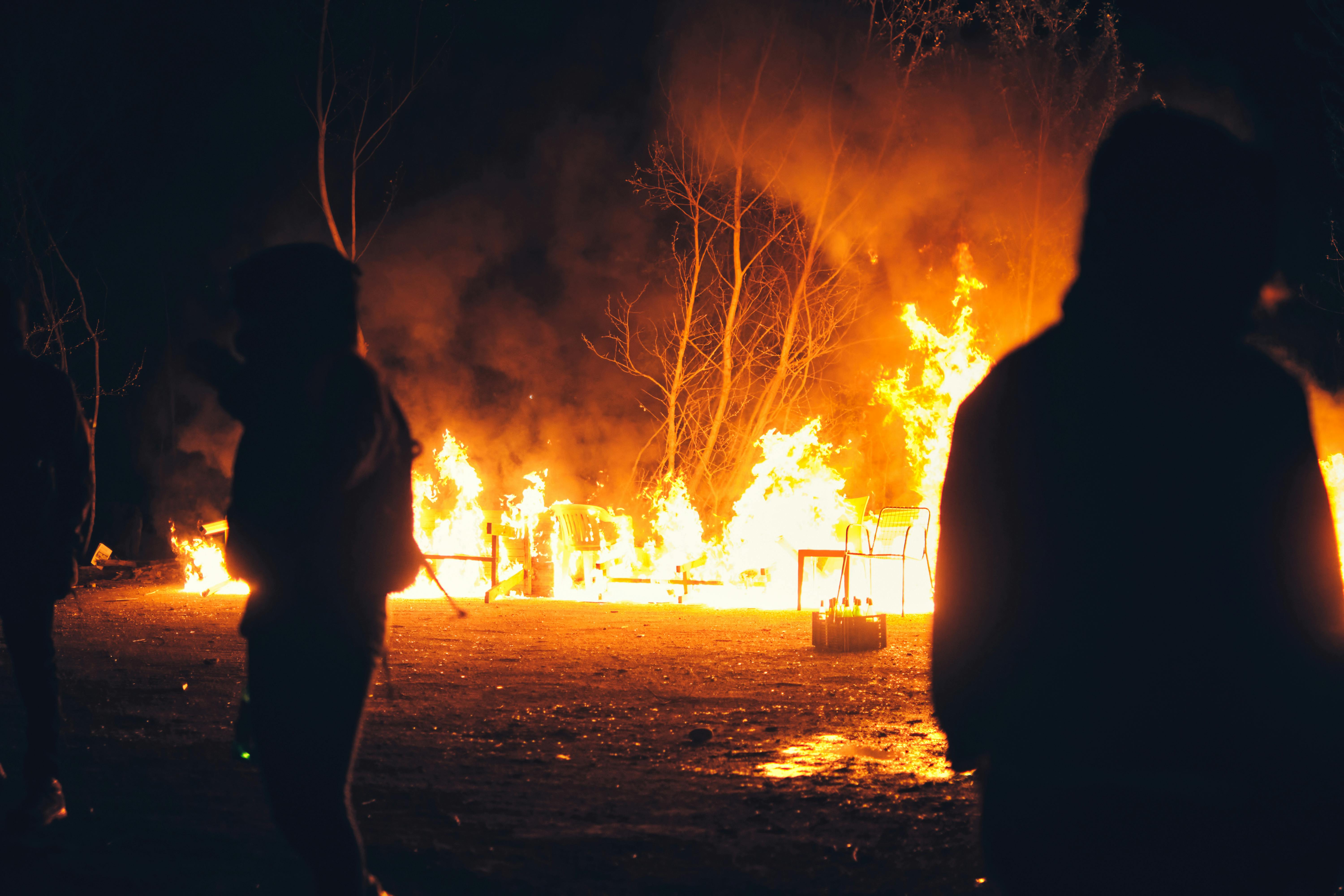
Fire patterns serve as the evidence of a dynamic interaction between flames and surfaces during a fire. This is a vital aspect in forensic fire science investigations, as they provide valuable clues.
Reading Burn Patterns
In fire investigation forensic science, burn patterns offer insights into the fire’s behavior, intensity, and origin. Here are the 3 burn patterns we need to understand:
V-Shaped Patterns :
As the name goes, V-shaped burn patterns resemble the letter “V”. They provide directional clues that aid investigators in uncovering the fire’s point of origin. Tracing these patterns back to their narrowest point helps determine the cause of the fire.
Char Patterns:
In fire investigation forensic science, char burn patterns vary in intensity and depth. They offer clues about the duration and intensity of the fire. This helps investigators reconstruct the fire’s timeline as well as the dynamics.
Irregular Patterns:
We characterize irregular burn patterns by their shape and distribution. This involves the intricacies between the fire and its surroundings. It also sheds light on the fire’s progression and any environmental factors that need to be considered.
Reading and interpreting burn patterns requires careful observation and consideration of various factors of fire investigators that influence fire behavior. By systematically examining these patterns, investigators can effectively draw meaningful conclusions.
Material Behavior in Fire
In forensic fire science, it’s important to understand how different materials react to fire. Here are some materials take note of:
Paper and Cardboard:
Highly flammable with low ignition points (356°F to 446°F). These materials are common fuel sources in fires. They require careful consideration in fire investigations.
Textiles (Fabric):
These include natural fibers like cotton or synthetic alternatives like polyester. Natural fibers tend to ignite at higher temperatures (572°F to 752°F). While synthetic fibers have lower ignition points (482°F to 572°F). The diverse ignition points and burning characteristics of textiles influence the fire’s spread and severity.
Plastics:
Plastics are widely used in modern environments. They pose a significant fire hazard due to their low ignition points (572°F and 932°F). Plastics necessitate stringent fire safety measures alongside forensic scrutiny.
Metals:
Metals tend to be more resistant to ignition and combustion. However, metals play a role in fire dynamics. They offer contrasting behaviors when compared to organic materials. These can guide the fire investigation forensic science analysis accordingly, with high and low ignition points.

In order to fully understand the impact of fire on structural materials like wood, steel, and concrete, fire investigators must be able to:
Assess scene safety.
Evaluate structural stability
This enables them to discern the fire’s origin and progression. Below, you’ll find a chart on the effects on these structural materials:
Investigative techniques entail examination of the aftermath of a fire. This is where fire investigation forensic science techniques are employed to determine the mysteries surrounding the blaze, such as the fire’s behavior.
The Role of Forensic Science in Fire Investigations
Forensic science serves as the cornerstone of fire investigations. This bridges the gap between science and legal proceedings. Forensic fire investigations uncover the truth behind the flames. They analyze physical evidence and employ scientific methods to illuminate the circumstances surrounding the fire. This is significant throughout the pursuit of justice and accountability.
Merging Science with Legal Proceedings
During fire investigations, forensic scientists ensure the admissibility and reliability of evidence in court. This is achieved by upholding rigorous standards of scientific integrity and procedural ethics. Forensic experts not only facilitate the pursuit of truth, they also safeguard justice.
Initial Response and Safety
Here are some things to think about when it comes to scene safety during a fire investigation:
Securing the Scene
Securing a fire scene is paramount in ensuring the safety of personnel and preserving crucial evidence for forensic analysis. Investigators assess scene safety, control access to prevent contamination, and document conditions to pave the way towards a thorough investigation.
Safety Hazards
Safety hazards present themselves at fire scenes. These include unstable structures, toxic fumes, and hazardous materials. To mitigate risks, investigators wear appropriate Personal Protective Equipment (PPE). They also conduct thorough scene assessments, and maintain effective communication with team members as part of effective scene safety.
Collection and Preservation of Evidence Amidst the Ashes
Among the charred remnants of a fire scene is where forensic investigators collect and preserve evidence. This safeguards clues such as charred debris and melted artifacts. Each fragment holds potential insight into the fire’s origin, cause, and culpability. This necessitates careful documentations and preservation protocols.
Physical Evidence
Various types of physical evidence at fire scenes offer valuable insights into the fire's cause, origin, and progression. These may include debris and ashes, burn patterns, ignition sources, remnants of materials, and trace evidence.
Best Practices:
Adhering to best practices in evidence collection and preservation is essential. This maintains the integrity of forensic investigations. This involves using proper tools, sampling methodically, and meticulously preserving the chain of custody. This ensures the accuracy and reliability of collected evidence.
Documenting the Scene
Documentation of the fire scene is indispensable. This is because it aids in the reconstruction of the event alongside analysis of fire behavior.
Common methods include:
- Photography
- Sketching
- Video recording
Each of these methods provide unique perspectives and insights into the scene's intricacies. By employing these methods effectively, investigators create a comprehensive record. This facilitates accurate evidence collection and analysis in the investigative process.
Analytical Techniques Revealing Truth within Smoke and Ash
Through a diverse array of analytical techniques, forensic scientists delve beneath the surface of smoke and ash. This is how they unveil hidden truths and unravel the complexities of fire dynamics.
From chemical analysis to microscopic examination, these techniques offer invaluable insights. These help determine the fire's behavior, ignition sources, and contributing factors. Additionally, this guides investigative efforts towards resolution and clarity.
Computational Modeling: Simulating Fire Scenarios for Insightful Analysis
Computational modeling revolutionizes fire investigation forensic science. It does this by offering a virtual laboratory for simulating fire scenarios with unparalleled accuracy.
Through advanced algorithms and mathematical models, investigators can:
- Predict fire behavior
- Analyze its progression
- Optimize safety protocols with precision.
Through computational modeling, investigators gain invaluable insights into the dynamics of fire spread. This also aids in the reconstruction of past incidents and the formulation of evidence-based hypotheses.
Chemical Analysis: Identifying Accelerants and Tracing Origins
Chemical analysis emerges as a powerful tool in the arsenal of forensic fire investigation. This enables investigators to identify accelerants and trace their origins.
By analyzing residues and volatile compounds present at fire scenes, forensic experts unearth evidence. These incendiary substances shed light on the deliberate acts of arson and facilitating the pursuit of justice.
Through chemical analysis, investigators unravel the mysteries concealed within the smoke and ash. This is yet another way to guide investigative efforts towards clarity and accountability.

Fire Science Software: BlazeStack Case Management
BlazeStack emerges as a revolutionary software platform tailored to streamline forensic fire investigation cases and enhance the analysis of fire-related incidents.
Blazestack aids with fire investigation forensic science in several ways:
Data Management: It provides a centralized platform for storing and managing all relevant data
Evidence Analysis: Blazestack uses advanced algorithms to analyze evidence collected from fire scenes
Visualization Tools: The platform offers visualization tools that allow investigators to map out the progression of a fire.
Collaboration Features: Blazestack facilitates collaboration among investigators.
Reporting Capabilities: Blazestack enables investigators to generate comprehensive reports
Blazestack simplifies fire forensics analysis by providing a comprehensive and efficient platform for managing, analyzing, and reporting fire-related incidents
BlazeStack simplifies the complexities of fire forensics analysis, paving the way for comprehensive and efficient investigative outcomes.
Computer-Aided Fire Modeling- forensic analysis, fire behavior
Computer-aided fire modeling stands at the forefront of fire investigation forensic science. This is because it empowers investigators with a sophisticated tool. It’s used for analyzing fire behavior and optimizing safety measures. By employing advanced computer algorithms and mathematical equations, this technology predicts:
- Fire spread
- Development
- Interaction
Through the reconstruction of past fire incidents and the validation of hypotheses against physical evidence, computer-aided fire modeling enhances investigators' capabilities, facilitating informed decision-making and advancing the science of fire investigation.
Scene Reconstruction forensic science, legal proceedings
Scene reconstruction, encompassing both physical and virtual approaches, plays a pivotal role in fire investigation forensic science, offering invaluable insights into fire dynamics and behavior:
Together, these approaches offer complementary perspectives, enriching investigative analysis and strengthening the pursuit of truth and justice.
Accelerant Detection arson cases, legal proceedings
Accelerant detection from fire debris plays a pivotal role in arson investigation. This aids in identifying deliberate acts of arson and the pursuit of justice.
Laboratory Techniques:
Gas Chromatography-Mass Spectrometry (GC-MS) stands as a cornerstone method for detecting accelerants in forensic laboratories. This separates components based on molecular characteristics and then identifies them through mass spectrometry analysis.
Field Equipment:
Portable Gas Detectors equipped with sensors for volatile organic compounds (VOCs) offer real-time detection of accelerants. This enables swift and accurate identification in the field.
Electrical and Mechanical System Failures
Identifying and evaluating potential electrical and mechanical system failures forms an integral part of fire investigation forensic science. It aids in determining fire origins and enhancing fire safety measures.
Accelerant detection is fundamental in arson investigation. This is because it helps investigators confirm suspected arson and aids in identifying suspects.
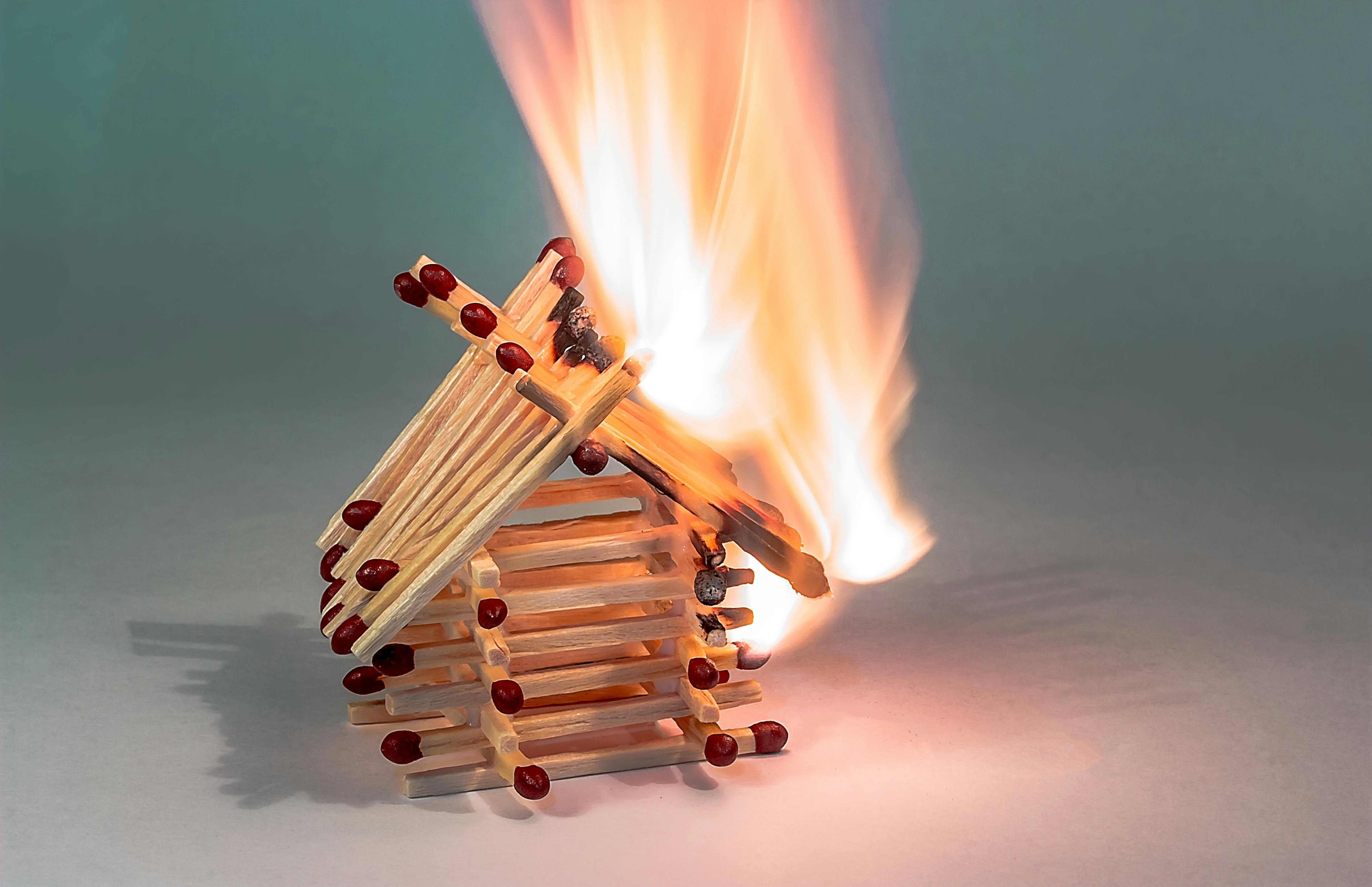
Chain of Custody: Ensuring Admissibility of Evidence in Court
Ensuring the integrity and admissibility of evidence in court, the chain of custody meticulously documents the collection, handling, and storage of evidence.
Let's discuss the steps to achieve this:
- Document Evidence Collection
- Establish a Chain of Custody
- Secure Storage.
- Forensic Analysis
- Legal Documentation
- Trial Preparation
- Courtroom Presentation
These steps play their part from inception to the presentation of evidence during legal proceedings.
Ethics in Fire Investigation: Balancing Objectivity with Advocacy
Balancing objectivity with advocacy, fire investigators uphold ethical standards of transparency, honesty, and confidentiality in handling sensitive information and evidence critical to their investigations.
Interacting with Law Enforcement and Legal Systems
Preparing for court testimony entails understanding the case details, presenting evidence systematically, and maintaining professionalism under scrutiny.
Testifying in Court
Preparing to testify in court requires careful preparation for crucial principles, particularly in presenting evidence and handling cross-examination. Here are some key points to remember when dealing with fire investigation forensics science:
- Understanding the details of the case, including the evidence you'll present and its relevance to the legal proceedings, is essential.
- Listen carefully, stick to the facts, and always maintain professionalism. When presenting evidence related to scene safety, do so systematically, utilizing visual aids for clarity.
By following these guidelines, you can effectively prepare to testify in court.
Ethical Responsibilities
Transparency, honesty, and ongoing education in ethical practices are essential for fire investigators to navigate the complexities of fire investigation forensic science and uphold the integrity of their profession.
Career Pathways in Fire Investigation Forensic Science
Educational Requirements and Training Programs
To embark on a career in fire investigation forensic science, individuals must pursue comprehensive education and training programs tailored to the complexities of the field. The educational landscape offers diverse pathways, ranging from traditional academic degrees to specialized certification programs and practical on-the-job training opportunities.
The available options for individuals are:
- Bachelor's Degree in Fire Science
- Certification Programs (organizations, such as the International Association of Arson Investigators (IAAI) and the National Association of Fire Investigators (NAFI), offer certification programs for fire investigators)
- Fire Investigation Courses
- On-the-Job Training
- Advanced Degrees(Master of Science in Fire Investigation or a related field)
By actively seeking out and making the most of these opportunities, individuals can position themselves for success in their future careers.
Roles and Responsibilities: From Field Investigators to Expert Witnesses
In the realm of fire investigation forensic science, professionals fulfill a spectrum of roles and responsibilities, each contributing to the intricate tapestry of investigative efforts. From field investigators meticulously examining fire scenes to expert witnesses providing critical testimony in legal proceedings, every role plays a vital part in the pursuit of truth and justice.
Opportunities for Advancement and Professional Development
Advancement in fire investigation forensic science is not solely contingent upon climbing the hierarchical ladder but also embracing continuous professional development and seizing opportunities for growth. Through ongoing education, specialized training in fire investigation procedures and techniques, and active participation in professional organizations, individuals can broaden their expertise, expand their networks, and advance their careers in the dynamic field of fire investigation.
Future Challenges and Opportunities
As fire investigators navigate the evolving landscape of fire investigation forensic science, they confront an array of challenges and opportunities. From the increased complexity of building materials to the emergence of cyber-arson and the impacts of climate change, the field grapples with multifaceted issues requiring innovative solutions and collaborative efforts. Despite these challenges, fire investigators have the opportunity to leverage emerging technologies, enhance public education initiatives, and advance methodologies to strengthen their investigative capabilities and safeguard communities from fire-related risks.
Final Word
We hope we’ve been able to shed light on the fundamental principles, advanced techniques, and legal considerations that are crucial to the field of fire investigation forensic science.
A career in fire investigation forensic science could offer an incredible opportunity to follow your passions, grow your talents, and positively impact society.
Aspiring fire investigators are encouraged to embrace ongoing education, professional development, and collaboration. At BlazeStack, we understand that this is the best way to navigate the complexities of the field and make meaningful contributions to society.
Trusted by Public and Private Investigator Teams Everywhere
Whether you're a big state agency, a small local fire department or somewhere in between, Blazestack software (NFPA 921® & CJIS compliant) collects fire scene data and generates standardized origin and cause reports in a fraction of the time of other methods.
To learn more about Blazestack, give us a call at (866) 303-4344 or email us at support@blazestack.com
Get Your Free 14-Day Trial and Custom Price Quote Now
We'll let Blazestack do the talking. Try it out right now for free.
A member of our staff will be in touch shortly.
